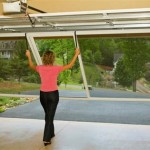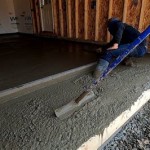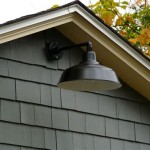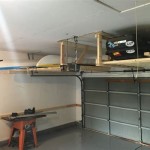How to Install a Dryer Vent in a Garage
Installing a dryer vent in a garage presents unique challenges and considerations compared to exterior venting. Garages are typically enclosed spaces, making proper venting crucial to prevent moisture buildup and potential hazards. This article outlines the process for safely and effectively installing a dryer vent in a garage, emphasizing the importance of adhering to building codes and prioritizing safety.
Before commencing any installation, a thorough understanding of local building codes is essential. Many jurisdictions have specific regulations regarding dryer vent placement and materials, particularly in enclosed spaces like garages. These codes are designed to minimize fire hazards and ensure proper ventilation. Consult with local building authorities or qualified contractors to determine the applicable regulations in your area. This proactive step can prevent costly rework and potential safety violations.
Furthermore, careful consideration should be given to the type of dryer being used. Gas dryers require stricter venting protocols than electric dryers due to the presence of carbon monoxide. Proper venting is paramount to prevent the accumulation of this odorless and potentially deadly gas. If dealing with a gas dryer, it is strongly recommended to engage a licensed professional for the installation to guarantee safety and compliance.
Key Point 1: Understanding Venting Options for Garages
When venting a dryer in a garage, there are generally two primary options: venting to the exterior or using a ventless dryer kit. Each option has its own set of advantages and disadvantages, and the selection depends largely on the specific circumstances of the garage and individual preferences.
Exterior Venting: This involves running the dryer vent ductwork through the garage wall or ceiling to an exterior termination point. This is the preferred method for optimal performance, as it directly removes the hot, moist air and lint from the garage. However, it requires careful planning to ensure proper ductwork routing, sealing, and insulation. The exterior termination point should be positioned away from windows, doors, and air conditioning units to prevent moisture from re-entering the building.
Ventless Dryer Kit: These kits utilize a water reservoir to trap lint and moisture, effectively eliminating the need for exterior venting. While convenient, ventless dryer kits can increase humidity levels in the garage, particularly during extended use. Regular maintenance, including water reservoir emptying and filter cleaning, is crucial to maintain optimal performance and prevent mold growth. Furthermore, the efficiency of the dryer may be slightly reduced compared to exterior venting.
The choice between exterior venting and a ventless dryer kit depends on factors such as the garage's size, ventilation capabilities, budget, and the frequency of dryer use. In most cases, exterior venting is the recommended option, provided it can be implemented safely and in compliance with local building codes.
Regardless of the venting method chosen, it is important to ensure that the dryer is placed on a level surface and that the vent connection is secure. This will prevent leaks and ensure that the dryer operates efficiently.
Key Point 2: Step-by-Step Guide to Exterior Dryer Vent Installation in a Garage
This section provides a detailed guide to installing a dryer vent to the exterior of a garage. It is assumed that the dryer is an electric model. If installing a vent for a gas dryer, consult a qualified HVAC professional.
Step 1: Gather Necessary Materials and Tools:
Before starting the installation, assemble all the necessary materials and tools. This includes:
- 4-inch diameter rigid metal ductwork (flexible metal duct can be used for short connections but rigid duct is preferred for its superior airflow and fire resistance)
- Duct clamps or foil tape (listed to UL 181)
- Exterior dryer vent hood with a backdraft damper
- Drill with appropriate drill bits (for creating the wall penetration)
- Hole saw (4 1/4 inch diameter) for creating a clean opening
- Screwdriver or nut driver (for securing clamps and vent hood)
- Measuring tape
- Pencil or marker
- Safety glasses
- Gloves
- Level
- Sealant (exterior-grade, for sealing around the vent hood)
- Ladder (if necessary, to reach the desired vent location)
Step 2: Plan the Vent Route:
Determine the shortest and most direct route from the dryer to the exterior wall. Minimize bends in the ductwork, as each bend reduces airflow efficiency. Aim for a maximum duct length as specified by the dryer manufacturer (typically around 25 feet equivalent length, with each 90-degree bend equivalent to 5 feet of straight duct). Mark the location on the wall where the vent will exit, ensuring it is at least 12 inches above the ground and away from any obstructions or potential hazards.
Step 3: Create the Wall Penetration:
Using the hole saw, carefully drill a 4 1/4-inch diameter hole through the garage wall at the marked location. Ensure that the drill bit is perpendicular to the wall to create a clean and straight opening. Take precautions to avoid hitting any electrical wiring or plumbing within the wall. If uncertain, consult with a qualified electrician or plumber before proceeding.
Step 4: Install the Exterior Vent Hood:
From the exterior of the garage, insert the vent hood into the hole. Secure the vent hood to the wall using screws, ensuring it is level and properly aligned. Apply sealant around the edges of the vent hood to create a watertight seal and prevent moisture from entering the wall cavity.
Step 5: Connect the Ductwork:
Starting at the dryer, connect sections of rigid metal ductwork using duct clamps or foil tape. Ensure that all connections are secure and airtight. Use flexible metal duct for the final connection to the dryer, allowing for easy movement and maintenance. Avoid using plastic or vinyl duct, as these materials are flammable and can accumulate lint, posing a fire hazard.
Step 6: Secure and Insulate the Ductwork:
Secure the ductwork to the wall or ceiling using straps or supports to prevent sagging and ensure stability. If the ductwork runs through an unheated area of the garage, consider insulating it to prevent condensation and heat loss. This will improve the dryer's efficiency and reduce the risk of mold growth.
Step 7: Test the Installation:
Once the ductwork is fully connected and secured, turn on the dryer and check for any leaks or obstructions in the vent system. Ensure that the backdraft damper on the exterior vent hood opens and closes freely. If any issues are detected, address them immediately to prevent performance problems and potential hazards.
Step 8: Final Inspection:
Perform a final inspection of the installation, ensuring that all connections are secure, the ductwork is properly supported, and the exterior vent hood is functioning correctly. Clean up any debris or materials generated during the installation process.
By following these steps carefully, a safe and effective dryer vent installation can be achieved in a garage.
Key Point 3: Safety Precautions and Best Practices
Prioritizing safety is non-negotiable when installing a dryer vent, particularly within the enclosed environment of a garage. Several critical safety precautions and best practices must be diligently observed to mitigate potential hazards and ensure a successful installation.
Wear Appropriate Personal Protective Equipment (PPE): Always wear safety glasses and gloves to protect eyes and hands from debris and sharp edges. A dust mask or respirator may be necessary when cutting or drilling into drywall or other materials.
Disconnect Power: Before commencing any work on the dryer or electrical components, disconnect the power supply to prevent electric shock. Locate the circuit breaker controlling the dryer and switch it off.
Avoid Combustible Materials: Keep all flammable materials away from the dryer and vent system. Never store chemicals, gasoline, or other hazardous substances near the dryer.
Use Rigid Metal Ductwork: As previously emphasized, rigid metal ductwork is the preferred material for dryer vents due to its superior fire resistance and airflow characteristics. Avoid using plastic or vinyl duct, as these materials are flammable and can accumulate lint, posing a significant fire hazard.
Maintain Proper Ductwork Length and Configuration: Adhere to the dryer manufacturer's recommendations regarding maximum duct length and bend limitations. Excessive duct length or numerous bends can restrict airflow, leading to reduced dryer performance and increased lint accumulation.
Clean the Vent System Regularly: Schedule regular cleaning of the dryer vent system to remove accumulated lint. Lint buildup is a major fire hazard and can also reduce the dryer's efficiency. A professional dryer vent cleaning service can be engaged, or a specialized lint removal tool can be used.
Install a Lint Alert System: Consider installing a lint alert system to monitor airflow through the vent system and provide an early warning of potential blockages. These systems can help prevent fires and improve dryer performance.
Ensure Proper Ventilation: While venting the dryer to the exterior is essential, maintaining adequate ventilation within the garage is also important. Ensure proper airflow to prevent moisture buildup and potential mold growth. Consider installing a ventilation fan or opening windows periodically to promote air circulation.
Obtain Necessary Permits: Before commencing any installation, verify whether a building permit is required for dryer vent modifications. Fulfilling this requirement is always a good idea, as it ensures compliance with local regulations and protects both the installer and homeowner.
If in Doubt, Consult a Professional: If any aspect of the dryer vent installation is unclear or beyond expertise, consult with a qualified HVAC professional or contractor. Professional assistance can ensure a safe and compliant installation.
By adhering to these safety precautions and best practices, the risks associated with dryer vent installation can be minimized, ensuring a safe and efficient operation.

How To Install A Dryer Vent The Home Depot

Learn How To Reroute Dryer Vent From Garage Outside

Can You Vent A Dryer Into The Garage

How To Install A Dryer Vent The Home Depot

Running A Dryer Vent Through The Garage Doityourself Com

Dryer Vent Installation And Upgrades Diy

How To Install A Dryer Vent The Home Depot

Learn How To Reroute Dryer Vent From Garage Outside

This New Dryer Vent Upgrade Changes Everything Easy How To Install Diy

Inspecting The Dryer Exhaust Internachi
Related Posts








